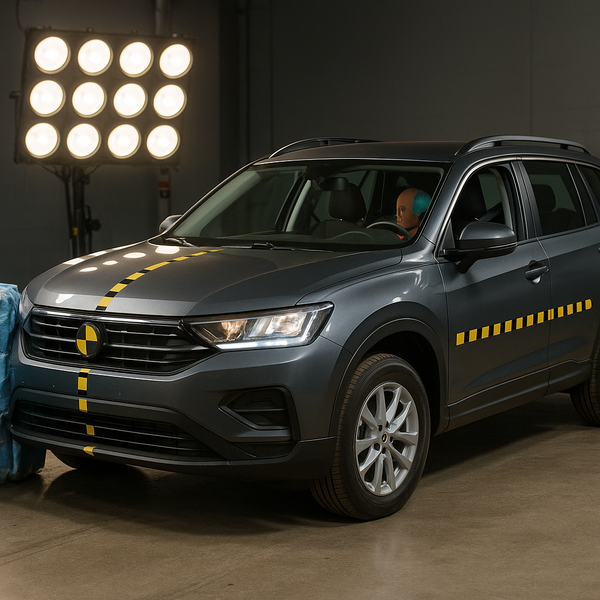
When choosing a new SUV, safety is often at the top of the list for drivers and families. Beyond just looking sturdy, how can you truly know if an SUV will protect you in an accident? This is where safety ratings come in, offering objective assessments based on rigorous testing and evaluation of protective features. Understanding these ratings is crucial for making an informed decision about one of your most significant investments in transportation and family protection.
Why SUV Safety Ratings Matter
Vehicle safety ratings provide consumers with valuable information about a vehicle's ability to protect occupants in various crash scenarios. They are the result of standardized tests conducted by independent organizations, simulating common types of collisions. By comparing ratings, potential buyers can gain insight into the relative safety performance of different SUV models under controlled conditions. These ratings also incentivize manufacturers to continuously improve vehicle designs and integrate advanced safety technologies.
Key Safety Rating Agencies
In the United States, two primary organizations are responsible for testing vehicles and providing safety ratings:
The National Highway Traffic Safety Administration (NHTSA): A government agency that conducts crash tests and provides star ratings (1 to 5 stars) for frontal crash, side crash, and rollover resistance. It also evaluates recommended safety technologies.
The Insurance Institute for Highway Safety (IIHS): A non-profit organization funded by auto insurers. The IIHS conducts more stringent crash tests, including overlap frontal tests, side tests, roof strength tests, and head restraint evaluations. They also assess headlight performance and the effectiveness of front crash prevention systems. Their top awards are Top Safety Pick and Top Safety Pick+.
Understanding Crash Tests
Both NHTSA and IIHS use sophisticated crash test dummies equipped with sensors to measure forces and potential injuries during simulated collisions. Here are some of the key tests:
Frontal Crash Tests: Simulate a head-on collision. NHTSA uses a full-width barrier test, while IIHS performs moderate overlap and small overlap frontal tests, which simulate hitting a barrier or another vehicle with only part of the vehicle's front.
Side Crash Tests: Simulate being struck on the side by another vehicle or a pole. These tests assess protection for occupants in the side closest to the impact and the opposite side.
Rollover Resistance: NHTSA performs a static stability factor test and dynamic test to evaluate a vehicle's propensity to roll over, particularly in single-vehicle crashes involving loss of control.
Roof Strength: IIHS tests how well the roof can withstand forces in a rollover crash.
Head Restraints and Seats: IIHS evaluates seats and head restraints for their ability to protect against whiplash injuries in rear crashes.
Beyond the Crash: Safety Features
While crash test performance is critical, modern SUV safety extends to technologies designed to prevent crashes or mitigate their severity. Safety ratings increasingly incorporate evaluations of these features:
Airbags: Including frontal, side curtain, side torso, and sometimes knee airbags, designed to cushion occupants and prevent impact with hard surfaces.
Electronic Stability Control (ESC): A system that helps the driver maintain control during extreme steering maneuvers by selectively braking individual wheels.
Anti-lock Braking System (ABS): Prevents wheels from locking up during hard braking, allowing the driver to steer.
Advanced Driver Assistance Systems (ADAS): This broad category includes features like Forward Collision Warning (FCW), Automatic Emergency Braking (AEB), Lane Departure Warning (LDW), Lane Keeping Assist (LKA), Blind Spot Monitoring (BSM), Rear Cross-Traffic Alert (RCTA), and Adaptive Cruise Control (ACC). IIHS and NHTSA evaluate the performance and effectiveness of many of these systems.
Decoding Ratings and Awards
NHTSA's 5-Star Safety Ratings provide a simple, easy-to-understand system. More stars mean better performance in their specific tests.
IIHS uses a rating scale of Good, Acceptable, Marginal, and Poor for individual crash tests and evaluations. Vehicles earning Good ratings in specific key crash tests, plus meeting criteria for front crash prevention and headlights, can qualify for the Top Safety Pick or the higher standard Top Safety Pick+ award.
It's important to look at the details behind the ratings. A vehicle might perform exceptionally well in one test but less so in another. Understanding the specific tests and features evaluated gives a more complete picture of a vehicle's safety profile.
Comparing SUV Safety Ratings
When researching SUVs, compare the ratings from both NHTSA and IIHS for the specific models and model years you are considering. Different model years can have different ratings due to design changes or updated test procedures. Look at the detailed reports on the agencies' websites, not just the summary stars or awards. Consider how your driving habits and typical passenger load (e.g., young children requiring specific car seat considerations) might relate to the tests conducted.
Safety Ratings and Your Decision
Safety ratings should be a significant factor in your SUV purchase decision, but they are just one piece of the puzzle. Other factors like reliability ratings, size, features, fuel efficiency, and price are also important. However, understanding safety performance based on independent testing provides a crucial layer of confidence and protection. By taking the time to decode these ratings and understand the safety features available, you can choose an SUV that offers peace of mind on every journey.

